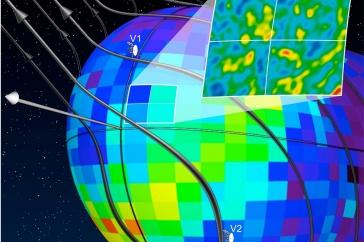
Researchers and engineers from the University of New Hampshire's Space Science Center (SSC) have been selected to be a part of a science mission by the National Aeronautics and Space Administration (NASA) to sample, analyze, and map particles streaming to Earth from the edges of interstellar space.
“Our journey continues to discover and understand how the sun controls the boundaries of our solar system and how it regulates the space environment where we send astronauts,” says Nathan Schwadron, the Norman S. and Anna Marie Waite Professor of physics and one of the deputy principal investigators overseeing the mission. “We will take the next leap in mapping our global heliosphere, which regulates the entry of galactic cosmic rays into our solar system. These galactic cosmic rays cause radiation exposure that poses risks for humans in space, can damage space instruments, adversely affect our satellites and even influence the Earth’s atmosphere.”
The Interstellar Mapping and Acceleration Probe (IMAP) mission, which is planned to launch in 2024, will help researchers around the world better understand the boundary of the heliosphere, a bubble surrounding and protecting our solar system. The heliosphere’s protection from radiation strongly affects life on Earth. Within the helisophere the constant flow of particles from our Sun, called the solar wind, collides with material from the rest of the galaxy. This collision sets up plasma boundaries in space that limit the amount of harmful cosmic radiation entering the heliosphere. IMAP will collect and analyze particles that are used to map the heliosphere’s boundaries.
